-
Refugees in Germany; Swedish border checks; ISIS’s British medics; U.K. flood defenses
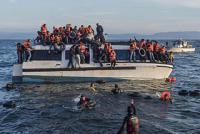
German economist says Germany should expect a tough competition between refugees and poorer Germans; Sweden, as of midnight Sunday, began to impose strict identity checks of all travelers from Denmark; a British delegation, including an imam from London, has traveled to Sudan to try to dissuade young British doctors from joining ISIS; as parts of the United Kingdom braced themselves for more misery, the government’s storm-related actions are criticized.
-
-
As storms continue to batter U.K., estimates of cost rise
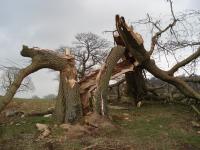
As Storm Frank – which is following on the heels of Storms Eva and Desmond — continues to batter England, Scotland, and Wales, estimates of the cost of the damage wrought continue to rise. The total economic loss caused by the three Storms may well breach £3 billion – and these projections do not include any government spending on flood defenses, estimated to be between £2.3 billion and £2.8 billion.
-
-
Climate-induced disasters linked to food security across time and place
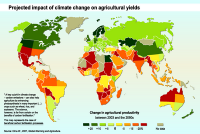
Teams of researchers in the American Southwest and North Atlantic Islands have found that historic and prehistoric peoples in these regions who had created vulnerabilities to food shortfall were especially susceptible to impacts from climate challenges. Their “natural” disasters were human made in conjunction with climate challenges.
-
-
U.K.: Economic costs from flooding could reach £1.5bn, reduce GDP growth
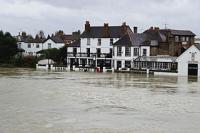
Economic losses caused by the flooding which has devastated parts of Britain in the past few days could exceed 1.5 billion pounds, and shave 0.2-0.3 percent off GDP growth overall in the first quarter of 2016. Insurers will likely shoulder the bulk of the burden after first Storm Desmond and then Storm Eva saw waters swamp large swathes of the country.
-
-
U.K. government rejected flood warnings from own advisers
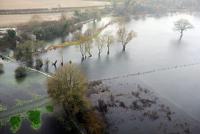
Critics charge that the U.K. government was warned by both the government’s own climate change experts and outside consultants that there was a need to take urgent action to protect the increasing number areas in Britain which are becoming susceptible to flooding, but that the government rejected the advice. Despite the urging of its own climate experts, the U.K. government in October, just a few weeks before the devastating flooding in Cumbria, decided not to develop comprehensive strategy to address flood risk.
-
-
Climate change losses for Southeast Asia well above previous estimate: ADB
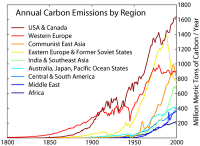
Economic losses from the impacts of climate change in Southeast Asia could be 60 percent higher than previously estimated, reducing the region’s gross domestic product (GDP) by up to 11 percent by 2100, according to a new Asian Development Bank (ADB) study. The analysis is an update to a 2009 ADB report that estimated a 7 percent annual reduction in economic output due to climate change.
-
-
Giant comets may pose danger to life on Earth
Astronomers report that the discovery of hundreds of giant comets in the outer planetary system over the last two decades means that these objects pose a much greater hazard to life than asteroids. The giant comets, termed centaurs, move on unstable orbits crossing the paths of the massive outer planets Jupiter, Saturn, Uranus, and Neptune. The planetary gravitational fields can occasionally deflect these objects in towards the Earth.
-
-
U.S., Israel to co-develop technologies for first responders

Some $12 million will be funneled to collaborative Israeli-American projects for the development of advanced technologies for first responders over the next three years. The agreement brings together the Israeli Ministry of Public Security and the U.S. Department of Homeland Security in a drive to better equip and prepare both countries’ national rescue forces including fire, police, and first-aid units. Each side will invest equally in the project.
-
-
Rail line service disruptions caused by sea level rise to increase dramatically
Rail services to and from the South West of England could be disrupted for more than 10 percent of each year by 2040 and almost a third by 2100, a new study suggests. The cost of maintaining tracks and sea defenses could also soar as predicted sea level rises, coupled with coastal storms and floods, pose major challenges for rail operators and governments.
-
-
Growing risks in flood-prone areas due to economic growth more than climate change
Worldwide economic losses from river flooding could increase 20-fold by the end of the twenty-first century if no further actions on flood risk reduction are taken. There are two contributors to risks associated with river flooding. Floods’ frequency and severity (both influenced by climate change); and the exposure to floods of people and economic assets (determined by economic activity and human residency in flood-prone areas). Researchers calculate that in many flood-prone regions of the world, more than 70 percent of the increase in flood-related risks over the coming decades can be attributed to economic growth and residency patterns in flood prone areas.
-
-
Fracking-induced earthquakes increase in magnitude over time
A study by geophysicists shows that earthquakes resulting from fracking-related wastewater injection follow several indicative patterns that are starkly different from natural causes. One of the study’s main conclusions is that the likelihood of large-magnitude manmade, or “induced,” earthquakes in areas where fracking activity takes place, increases over time, independent of the previous seismicity rate. The study’s findings could have implications for both the oil and natural gas industry and for government regulators. Under current practices, extraction activities typically shut down in an area if a high-magnitude earthquake occurs. But according to the researchers, a better approach might be to limit production before a large quake occurs.
-
-
U.S. facing looming grain failures

Across the United States, record quantities of corn and soybeans have been harvested in recent years. However, according to new research, this trend may soon change. “By midcentury,” the interdisciplinary team reports, “temperatures in Illinois will likely be closer to those of today’s mid-South, and precipitation will range somewhere between that of today’s East Texas and that of the Carolinas.” In the face of a rapidly changing climate, the researchers call for a U.S. Midwest field research network to address crucial agricultural challenges.
-
-
Climate change rapidly warming world’s lakes, threatening freshwater supplies
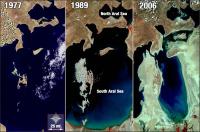
Climate change is rapidly warming lakes around the world, threatening freshwater supplies and ecosystems, according to a study spanning six continents. The study is the largest of its kind and the first to use a combination of satellite temperature data and long-term ground measurements. A total of 235 lakes, representing more than half of the world’s freshwater supply, were monitored for at least twenty-five years. The study found that lakes are warming an average of 0.61 degrees Fahrenheit (0.34 degrees Celsius) each decade. This is greater than the warming rate of either the ocean or the atmosphere, and it can have profound effects, the scientists say.
-
-
Autumn 2015 was record warm for the contiguous U.S.

The National Oceanic and Atmospheric Administration (NOAA) ha release a report which shows that the autumn of 2015 was the warmest autumn in the last 121 years — since measurements began in 1895. The September-November contiguous U.S. average temperature was 56.8°F, 3.3°F above the twentieth century average, surpassing the previous record of 56.6°F set in 1963. Record and near-record warmth spanned much of the nation. The November contiguous U.S. temperature was 44.7°F, 3.0°F above the twentieth century average and the thirteenth warmest in the 121-year period of record.
-
-
“Unprecedented” storms, floods in north-west England are more common than we think
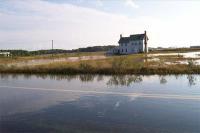
The recent “unprecedented” flooding in north-west England might be more common than currently believed, a group of scientists has warned. A team of experts has drawn on historic records to build a clearer picture of the flooding. They conclude that twenty-first-century flood events such as Storm Desmond are not exceptional or unprecedented in terms of their frequency or magnitude, and that flood frequency and flood risk forecasts would be improved by including data from flood deposits dating back hundreds of years.
-
- All
- Regional
- Water
- Biometrics
- Borders/Immig
- Business
- Cybersecurity
- Detection
- Disasters
- Government
- Infrastructure
- International
- Public health
- Public Safety
- Communication interoperabillity
- Emergency services
- Emergency medical services
- Fire
- First response
- IEDs
- Law Enforcement
- Law Enforcement Technology
- Military technology
- Nonlethal weapons
- Nuclear weapons
- Personal protection equipment
- Police
- Notification /alert systems
- Situational awareness
- Weapons systems
- Sci-Tech
- Sector Reports
- Surveillance
- Transportation
Advertising & Marketing: advertise@newswirepubs.com
Editorial: editor@newswirepubs.com
General: info@newswirepubs.com
2010-2011 © News Wire Publications, LLC News Wire Publications, LLC
220 Old Country Road | Suite 200 | Mineola | New York | 11501
Permissions and Policies
Editorial: editor@newswirepubs.com
General: info@newswirepubs.com
2010-2011 © News Wire Publications, LLC News Wire Publications, LLC
220 Old Country Road | Suite 200 | Mineola | New York | 11501
Permissions and Policies
